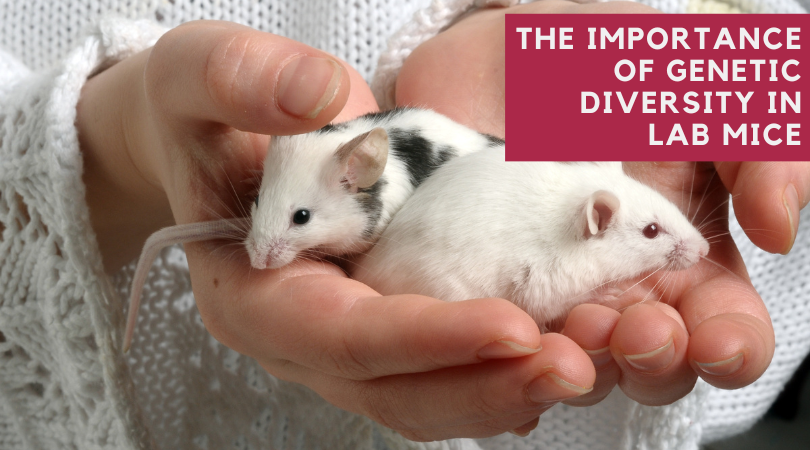The Importance of Genetic Diversity in Lab Mice
Posted on
Historically, researchers working with mice have preferred to use animals with as few genetic variations as possible. However, new studies show that a more diverse mouse population leads to more reliable results.
Using inbred mice allows researchers to reduce variables—always desirable when testing specific hypotheses. However, the results achieved using inbred mice may not translate as well to a genetically diverse human population, where genetics can’t be controlled.

A research article published in Drug Metabolism & Disposition stated that “genetic variation is now recognized as a key factor in the toxicity of pharmaceutical agents,” however, many mouse models used to test toxicity are genetically homogenous, and are therefore ill-equipped to text toxicity effects that may be present in rare genetic cases.
“Genetically diverse mouse populations can be used to help overcome the limitations of standard nonclinical and clinical studies and to model toxicity responses that require genetic susceptibility factors,” the report concluded.
Based on this premise, The Jackson Laboratory developed the Diversity Outbred mouse platform with the goal of increasing genetic diversity.
The diversity outbred (DO) mice created by The Jackson Laboratory were generated by intermixing eight different inbred mouse strains through many breeding cycles, producing a mouse population in which each animal has a unique genetic makeup and resulting traits, with 52 million genetic variants.
The eight mouse strains were chosen for their unique characteristics and their tendency to develop specific conditions, including diabetes, cancer, and obesity.
It is the most diverse mouse population created to date, and should give researchers the opportunity to test their hypotheses in a diverse population to determine if the results are the same as obtained while using inbred mice.
In fact, even inbred mice might have more genetic diversity than expected. Several studies in recent years have pointed to the inability to replicate research results even when using what should be standardized, “identical” mouse models.
Using outbred mice specifically engineered for their genetic diversity eliminates the potentially mistaken assumption that a mouse population has the same genetic makeup, and allows researchers to incorporate genetic diversity into their calculations.
In addition, if researchers see variance in their results between inbred and outbred mouse populations, using diverse mice can enable them to pinpoint which genetic variants are causing the discrepancy.
Outbred mice have already been used for a wide range of research in pharmacology, oncology, infectious diseases, behavioral research, and age-related cognitive decline, with the hope that testing in outbred mice will come closer to translating to testing in humans.